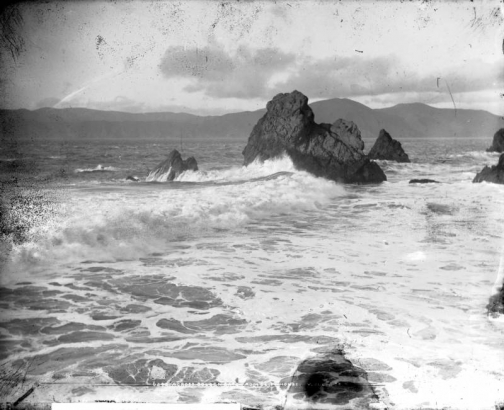Where does the American West end? Does it stop on western shores of California, Washington, and Oregon? Or does it go further? Maybe all the way to Hawaii?
That's a question that historians, librarians and others who study American history have debated for years. On one side of the argument are those who say that the West is squarely contained in the confines of the Continental United States. On the other side are those who believe that the role of Hawaiians, and other Pacific Islanders, was significant enough in the development of the Trans-Mississippi West that Hawaii should definitely be included in the conversation.
At Denver Public Library's Western History/Genealogy Department, however, the issue has long since been decided. Both Hawaii and Alaska are included in our collection. Over the years, we've amassed a solid collection that clearly illustrates the role Hawaii and the Hawaiian people played in opening the American West.
One great example is a book we recently acquired titled, Remembering Iosepa: History, Place, and Religion in the American West, by Matthew Kester (Oxford Press, 2013).
In this book, Kester tells the story of a small Utah settlement about 70 miles from Salt Lake City that was inhabited almost entirely by native Hawaiians who had converted to the Church of the Latter Day Saints. These hardy Hawaiians faced all the struggles any other settlers faced while trying to scratch out a living in the dusty west, plus quite a few more.
In particular, Iosepa's residents dealt with unfounded fears that the settlement's residents had brought leprosy (now known as Hansen's Disease) to the state. Though a few Iosepa residents did, in fact, have leprosy, the disease is nowhere near as contagious as the region's newspapers made it out to be. According to WebMD, leprosy is transmitted through frequent, and extremely close, contact with leprosy victims and their eye and nose mist, making it unlikely to spread across the arid Utah landscape.
Despite some agricultural successes, Iosepa was eventually abandoned, but the legacy of Hawaiians and Pacific Islanders in Utah remains to this day. According to the U.S. Census Bureau, a full 1% of the state's population is identified as Pacific Islanders, as opposed to just .02% of the U.S. population as a whole.
Of course the Hawaiians who settled Iosepa were hardly the first Hawaiians to make the eastbound journey across the Pacific to the United States.
There's another argument that cements Hawaii's place in the history of the American West, Manifest Destiny.
The same philosophy that politicians and pioneers used to justify the westward expansion on the mainland was the same philosophy used by three different U.S. Presidents to justify the overthrow of the Hawaiian royal family. That particular palace coup paved the way for Hawaii to become a U.S. territory in 1898 and a full state in 1959. Though native Hawaiians weren't put on reservations the way indigenous peoples were on the Plains, their treatment and the "moral" arguments for their annexation were quite similar.
In his thesis titled, West of the West? The Territory of Hawai'i, the American West, and American Colonialism in the Twentieth Century, Aaron Stephen Nelson lays out the role Hawaiians played in the late 18th and 19th century fur trade, whaling and mining trades across the west, which was quite substantial. The descendants of those early settlers and visitors from the Pacific Rim can still be found in abundance throughout the West Coast.
The Sandwich Islands, as they were then known, also served as a way station for people and products that moved between the American West Coast and all parts of Asia and the Pacific Rim. In short, Hawaii played a very important role in the development of the Trans-Mississippi West and can easily be considered the far edge of the West.
Looking to learn more about Hawaii's role in the opening of the West? Take a look at some of these titles:


Add new comment